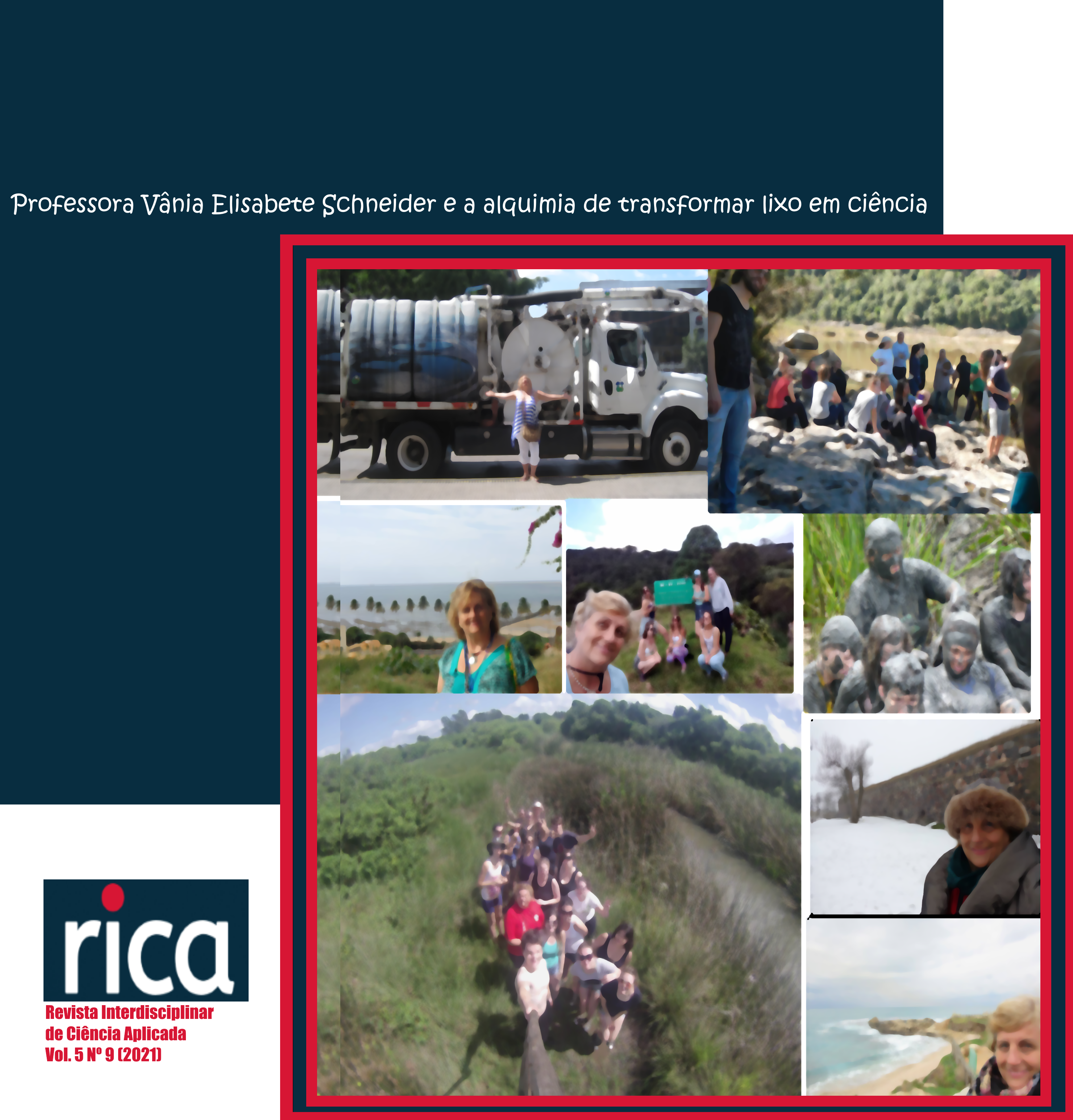Seed dormancy and germination in Uvaia (Eugenia pyriformis Cambess)
DOI:
https://doi.org/10.18226/25253824.v5.n9.07Keywords:
dormancy overcoming methods, gibberellic acid, scarification, thermal shockAbstract
South Brazil has a great diversity of alimentary fruit species. The uvaia (Eugenia pyriformis Cambess), along with other native
species, has great economic potential due to its fruits and as a feedstock for the food industry. However, there is little information on seed dormancy for this species and neither a defined official protocol regarding dormancy overcoming, a necessary requisite for large-scale production. This work aimed to verify the presence of dormancy in E. pyriformis seeds, also proposing a possible method to overcome it. The applied seed breaking treatments were: mechanical scarification with sandpaper, chemical scarification using concentrated sulfuric acid, thermal shock using hot water, chemically induced germination using gibberellic acid, a combination of sulfuric acid and gibberellic acid treatments, a combination of hot water and gibberellic acid treatments, and a control (seed without treatment). The seeds were kept incubated in a BOD incubator for 60 days at 25±5 °C and a photoperiod of 8:16 h (light:dark). The percentage of germination and germination speed index (GSI) were evaluated. The results indicated that mechanical scarification induced faster germination (GSI values of 0.637 for mechanical scarification and 0.187 for the control) and germination percentages of 77%, while the control treatment presented 36%. The fresh collected E. pyriformis seeds may present dormancy, which was overcome by mechanical scarification.
References
ZILLO, R. R.; SILVA, P. P. M.; ZANATTA, S.; CARMO, L. F.; SPOTO, M. H. F. Qualidade físico-química da fruta in natura e da polpa de uvaia congelada. Revista Brasileira de Produtos Agroindustriais, v. 15, p. 293-298, 2013.
EGEWARTH, J.; ROSSETTI, C.; ROJAHN, F. D.; LARGUE, C. M.; COSTA, C. J. Teste de germinação de sementes de uvaia (Eugenia pyriformis Cambess). In: Encontro de Iniciação Científica e Pós-Graduação da Embrapa Clima Temperado, 6, 2016, Pelotas. Proceedings [...] Pelotas: EMBRAPA Clima Temperado, 2016.
SCALON, S. P. Q.; SCALON FILHO, H.; RIGONI, M. R. Armazenamento e germinação de sementes de uvaia Eugenia uvalha Cambess. Ciência e Agrotecnologia, v. 28, p. 1228-1324, 2004.
ANDRADE, R. N. B.; FERREIRA, A. G. Germinação e armazenamento de sementes de uvaia (Eugenia pyriformis Camb.) – Myrtaceae. Revista Brasileira de Sementes, v. 22, p. 118-125, 2000.
TORRES, I. C. Presença e tipos de dormência em sementes de espécies arbóreas da Floresta Ombrófila Densa. Master’s degree thesis. Universidade Federal de Santa Catarina, Florianópolis, 2008. 65 p.
VIVIAN, R.; SILVA, A. A.; GIMENES JÚNIOR, M.; FAGAN, E. B.; RUIZ, S. T.; LABONIA, V. Dormência em sementes de plantas daninhas como mecanismo de sobrevivência – Breve revisão. Planta Daninha, v. 26, p. 695-706, 2008.
CARDOSO, V. J. M. Conceito e classificação da dormência em sementes. Oecologia Brasiliensis, v. 13, p. 619-630, 2009.
NONOGAKI, H. Seed dormancy and germination - emerging mechanisms. Frontiers in Plant Physiology, v. 5, 233, 2014.
FOWLER, J. A. P.; BIANCHETTI, A. Dormência em sementes florestais. Colombo: EMBRAPA, 2000. 28.
RAJI, R.; SIRIL, E. A. Assessment of different pretreatments to breakage dormancy and improve the seed germination in Elaeocarpus serratus L. - an underutilized multipurpose fruit tree from South India. Forest Science and Technology, v. 14, n. 4, p. 160-168, 2014.
SOHINDJI, F. S.; SOGBOHOSSOU, D. E. O.; ZOHOUNGBOGBO, H. P F.; HOUDEGBE, C. A.; ACHIGAN-DAKO, E. G. Understanding Molecular Mechanisms of Seed Dormancy for Improved Germination in Traditional Leafy Vegetables: An Overview. Agronomy, v. 10, n. 1, 2020. DOI: 10.3390/agronomy10010057
BRASIL. Ministério da Agricultura, Pecuária e Abastecimento. Regras para Análise de Sementes. MAPA-ACS, Brasília, 2009. 395 p.
BRASIL. Ministério da Agricultura, Pecuária e Abastecimento. Instruções para a Análise de Espécies Florestais. Brasília: MAPA-SDA-CGAL, 2013. 98 p.
RASEIRA, M. C. B.; ANTUNES, L. E. C.; TREVISAN, R.; GONÇALVES, E. D. Espécies Frutíferas Nativas do Sul do Brasil. Pelotas: Embrapa Clima Temperado, 2004. 124 p
ALVARES, C. A.; STAPE, J. L.; SENTELHAS, P. C.; GONÇALVES, J. L. M.; SPAROVEK, G. Köppen's climate classification map for Brazil. Meteorologische Zeitschrift, v. 22, p. 711-728, 2013.
BARBIERO, N. Z.; MOURA, C. D.; FÁVARIS, N. A. B.; LOPES, J. C. Tratamentos pré-germinativos em sementes de araçá. In: Encontro Latino Americano de Pós- Graduação, 17., 2017, São José dos Campos. Proceedings [...] São José dos Campos: Universidade do Vale do Paraíba, p. 1-5, 2017.
MAGUIRE, J. D. Speed of germination – aid in selection and evaluation for seedling emergence and vigor. Crop Science, v. 2, p. 176-177, 1962.
SILVA, C. V.; BILIA, D. A. C.; MALUF, A. M.; BARBEDO, C. J. Fracionamento e germinação de sementes de uvaia (Eugenia pyriformis Cambess. – Myrtaceae). Brazilian Journal of Botany, v. 26, p. 213-221, 2003.
SILVA, T. M. B.; ESTRELA, F. A.; MENDONÇA, R. M. N.; FERNANDES, L. F.; FETOSA, S. S. Germinação e emergência de mudas uvaia (Eugenia uvalha cambess) em diferentes substratos orgânicos. In: Congresso Brasileiro de Agroecologia, 8., Porto Alegre. p. 1-4, 2013. Proceedings [...] Available at < revistas.aba-agroecologia.org.br/index.php/cad/article/download/14632/9553/>. Access on May 27, 2020.
PRATAVIERA, J. S.; LAMARCA, E. V.; TEIXEIRA, C. C.; BARBEDO, C. J. The germination success of the cut seeds of Eugenia pyriformis depends on their size and origin. Journal of Seed Science, v. 37, p. 47-54, 2015.
COSTA, K.; PINTO, L. V. A.; MORAIS, V. S. P.; OLIVEIRA, C. L.; BARRETO, R. D. Germinação de sementes inteiras e fracionadas para a seleção de matrizes de uvaia. Revista Agroambiental, v. 9, p. 47-59, 2017.
Downloads
Published
How to Cite
Issue
Section
License
Copyright (c) 2021 Interdisciplinary Journal of Applied Science

This work is licensed under a Creative Commons Attribution-NonCommercial-NoDerivatives 4.0 International License.
Authors keep the copyright and cede to the journal the right of publishing first. Published works are licensed under a Creative Commons Attribution 4.0 International (CC BY 4.0) license, allowing the sharing of the work with recognition of the authorship and initial publication in this journal.






